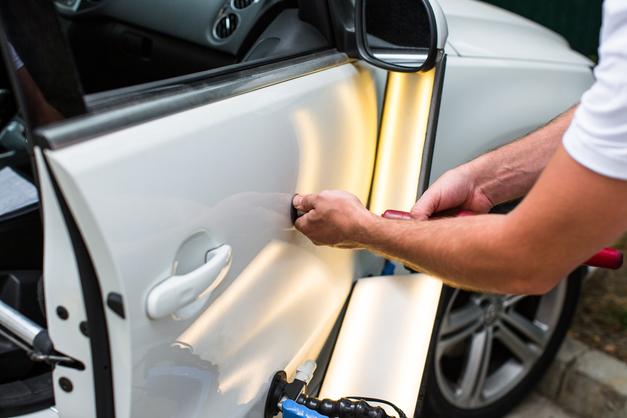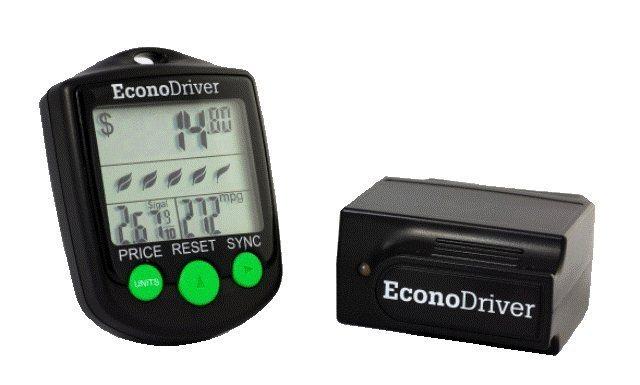Paintless dent repair: what is it and is it effective? Should you do this?
Unpainted dent repair or paint-free dent removal is an ideal choice for solving vehicle accident problems. In this guide, we outline which types of dents are eligible, how long it takes, and whether you can complete the process yourself at home.
Have you returned to your vehicle in the parking lot and spotted an unmistakably new scratch or dent? The culprit could be any number of things, although a rogue shopping cart or a free-swinging car door from the next space over is probably to blame. If so, your first instinct could be to ignore it. It’s not essential to the function of your car, and you might be afraid of how much it will cost to fix.
If dealing with repairs or maintenance gives you a headache, you are not alone. According to a survey conducted by AAA, two of every three drivers are distrustful of auto repair facilities, based on factors like overcharging, poor experiences, and unnecessary “fixes.” Given the hassle of taking your vehicle somewhere, and then being without it for a time, maybe you figure it’s just not worth it.
The Risk of Ignoring Damage
What Is Paintless Dent Repair?
What Dents Qualify for Paintless Dent Repair?
Limits of Paintless Dent Repair
Can It Damage My Car Further?
How Long Does It Take?
Will My Insurance Cover Paintless Dent Repair?
Can I Do Paintless Dent Repair Myself?
What Tools Do I Need?
What It All Means
The Risk of Ignoring Damage
It is not recommended to take this route because of several factors. For one, ignoring the damage can cause a drop in the resale or trade-in value of your vehicle. If you trade your dinged-up car for a newer vehicle, the dealership will take the damage into consideration and may offer a lower value.
Secondly, unattended dents or scratches leave your vehicle exposed to corrosion. If this process begins, the exterior of your vehicle will begin to rust. This is an irreversible chemical change that reduces the safety and value of your vehicle. Rust can accelerate or lessen depending on if you live in a dry climate, or if your vehicle is constantly exposed to the elements (such as being parked in a driveway or on the street during winter months).
Research continues to show that Americans are keeping their cars for longer. If you are in this category like so many others are, it’s imperative you do everything you can to keep your vehicle in the best possible shape. That is why you should address even the smallest of dings or dents, but what is your best option?
What Is Paintless Dent Repair?
Paintless dent repair (or PDR) is widely considered the most cost-effective, quickest, and most environmentally friendly solution to vehicle dent repairs. A good analogy would be a minor scratch on your arm compared to a more severe cut or laceration. Traditional auto body repair would be a comparable treatment option to stitches or surgery. PDR, in this analogy, would be the treatment option for the more minor injury.
PDR is typically achieved via a series of crucial steps:
Analyzing and accessing the damaged area.
Removing the affected area panel to gain access to the posterior side of the dent.
Slowly applying continuous pressure to both sides to work out the dent (without overcorrection).
What Dents Qualify for Paintless Dent Repair?
Best suited for low force impacts, paintless dent repair is a process for most minor dings. Light or minimal hail damage, impacts from stray balls in the driveway, and other “door dings” usually qualify for PDR.
When you take your vehicle in, the body shop will look for how far the metal on your car has been “stretched” due to the dent. They will examine the shape and depth of the dent. The smaller and more shallow the dent, the more PDR is a viable option.
If hail damage is extensive, consult with an auto body professional as to what the next step should be. While you can perform PDR at home, the location and sizes of the dents could present some unanticipated challenges. Photo: Hans Braxmeier.

Limits of Paintless Dent Repair
PDR only works if the dent has not seriously chipped or cracked your car’s paint. Anything that has caused deeper damage, or damage that is noticeable from a distance, will be too severe. If the dent is wider than your balled-up fist, or goes deeper into a door or panel than a half-inch, alternative measures are probably your best bet.
If the dent is too large, the process of working the panel out from both sides will likely stretch the metal and cause further imperfections. And if the damaged area consists of a deep crease or cut, PDR is also out of the question.
“A few years ago, I was cleaning out the garage and a ladder fell on my Ford Fusion,” recalls Carl Anthony, Automoblog’s Managing Editor. “When I moved it, there was a nasty slice about the size of a debit card right above the front passenger tire. The ladder had come down just right. My local guy ended up using different blending and color-matching techniques in order to complete the job. For the damage the ladder caused, paintless dent repair just wasn’t an option.”
Another example is the damage associated with hitting a deer. Collisions with wildlife often cause too much damage for paintless dent repair to be effective.
If done correctly, paintless dent repair can make a ding completely disappear.
Can It Damage My Car Further?
No, but the caveat is making sure the dent or ding isn’t outside the scope of what PDR can accomplish. Assuming the dent qualifies, and if the process is done correctly, it will be hard to tell (if not impossible) where the dent was to begin with.
Auto body professionals are trained and certified to perform a number of repairs on your vehicle, including PDR. Many of them have been working in the shop for years, so they are accustomed to seeing all kinds of dents.
“If the technician is well-trained and good with the tools, the dent will be completely gone and you will have nothing to worry about,” Anthony said. “Although, if you are unsure, don’t be afraid to ask questions. In my experience in the car business, technicians at reputable shops are very good at explaining things in a clear and concise way.”
Always ask more questions if you are unsure of anything involving paintless dent repair.
How Long Does It Take?
Fortunately, because it’s designed for smaller and less intrusive impacts, paintless dent repair is a quicker solution compared to traditional repairs or replacements. While traditional repairs may require ordering factory parts and paint, and an overnight stay in the shop for your car (or longer), paintless dent repair is done same-day and requires no additional parts.
If the dent is minor, the wait time is similar to that of getting your tires replaced. It will take a few hours at most. However, if there is extensive damage, like what might occur after a hail storm, the process could take several days.
Will My Insurance Cover Paintless Dent Repair?
Unless the repairs extend beyond multiple sections or panels of the body, paying out of pocket is probably your best option. While you can get your insurance to cover the cost, you run the risk of facing an increased premium down the road.
Generally speaking, repairs out of pocket are probably limited to a couple hundred dollars (or less) if it’s a typical dent.
Can I Do Paintless Dent Repair Myself?
Before you decide, consider if you have the time, patience, and necessary tools. PDR tools need to be used correctly for the best results, which takes practice. If you have time to spare, or find yourself dealing with this unfortunate damage frequently, then it might be wise to learn. However, it is imperative you do not overcorrect the dent.
Overcorrecting is the application of too much force when you pull the dent out, thus stretching the metal. This is not a process you can reverse, so avoid this crucial mistake.
What Tools Do I Need?
Here are three kits we would recommend if you want to try paintless dent repair at home.
PDR Kit #1: The first is a comprehensive, 200-piece kit from Super PDR that includes a number of color-coded rods, a vacuum suction cup, and a dent lifter. If you want to dive, head first, into PDR and learn the trade, then you will have all the tools necessary.
PDR Kit #2: An upgraded, 45-piece kit from Gliston is another good option and is the top pick on AutoGuide’s list of the best PDR kits for your car. AutoGuide says the car dent puller includes 16 different sized tabs, and can fix dents in as little as 30 minutes.
PDR Kit #3: Finally, there is a more budget-friendly kit from Manelord that includes a bridge dent puller, black and blue glue puller tabs, and two glue shovels. While not as many pieces as the other two, the Manelord kit still has good reviews on Amazon when it comes to fixing unexpected dents.
What It All Means
While DIY repairs are an option, the expert-level knowledge and the ability to use the required tools might be more effort than it’s worth – especially as paintless dent repair is rarely an expensive fix. Auto body professionals know what parts need to be removed to access the damaged area in a timely fashion. They also know the fine line between fixing the dent and overcorrecting.
The most important thing is to address the dent as soon as it becomes apparent, whether you do it yourself or take it somewhere. That will preserve the life of your vehicle down the road.
Dominic LoBianco is a writer for Calibre Collision. Dominica covers a wide range of topics and topics, from safe driving skills to improving the way you commute in the morning.
-
Latest
 Inside the 2019 Toyota TRD Pro lineup
Inside the 2019 Toyota TRD Pro lineupToyota Racing Development, commonly referred to as TRD, creates the architecture, engines and parts for various Toyota vehicles. TRD supported the off-road legend Ivan "Ironman" Stewart on the road wh...
-
Next
 Contest: Win a Lemur EconoDriver or SafeDriver monitor
Contest: Win a Lemur EconoDriver or SafeDriver monitorLast month, we launched a Gearhead gift guide with OBDII scanner, and a device called Lemur EconoDriver entered the list. This is a small tool connected to your keychain that can wirelessly monitor an...
